| |
“Bob had the ability to make you want to deliver the impossible,” said Alan Heim, who won an Academy Award for editing All That Jazz and also collaborated with the filmmaker on Liza With a Z, Lenny and Fosse’s final film, Star 80. “He was tough, but that kind of generosity makes people loyal and you just want to deliver the best you can do,” said Heim. “I regard Bob as a genius, and we don’t have many of them. I consider myself incredibly lucky.” |
| |
Editor Alan Heim, Los Angeles Times Retrospective on Fosse, 2018* |
Note: Apologies for the two weeks delay of this review. I thought I was somewhat sheltered from the ravages of the virus living where I live. But with close relatives in hospital and in-laws unlucky enough to contract Covid, (and as of a week last Saturday, my son losing a finger, long story) my life has been a little fraught. With full-on house and animal duties while my partner plays nurse 200 miles away, spare time is rationed hard. Still, I could not resist the directorial debut of Bob Fosse.
There are several movies on every cinephile’s list that we’ve never seen, well-known titles in our cultural orbit, some important landmarks that we simply have not got around to screening for ourselves. Sweet Charity was certainly on that list. We simply don’t have enough life to see everything and as a champion of cinema the guilt sometimes niggles. I used to flick through CDs in Tower Records decades ago and was always brought up by covers and titles of films that I felt I really needed to have seen. Zabriskie Point was one (that’s what nudity does to you) but that one’s ticked off now. I’m a huge fan of director and choreographer Bob Fosse but admit to having based that fandom on a mere three movies and three movies only. Granted, he only directed five features in his career. I have seen a production of his stage show Dancin’ (and can still do the hand/lap slap routine at the drop of a slanted hat). His Lenny is a terrific piece of work with a sublime Dustin Hoffman performance as radical comedian Lenny Bruce. But it’s the extraordinary Cabaret (sublimely edited by David Bretherton) and the even more jaw-dropping All That Jazz that cemented his reputation in my eyes. It’s no coincidence that Alan Heim got an Oscar and a BAFTA for his work on that film. He is held in high regard in US editing circles, and was once the president of the American Cinema Editors union. So I’m here for Fosse.

I was shocked in both positive and not so positive ways by his debut as a feature director, a schizoid work that leans more heavily on the aspect that can take the strain less well than its more physical partner. It’s a cloying rom-com partnered with an innovative dance movie and it asks the lion’s share of engagement from the former. I wondered if this could be Fosse’s finest hour. Pity the movie is two and a half hours long… In the first scene of Sweet Charity we meet a naïve young taxi-dancer (a woman partnered in a dance with a paying customer, as close to and as far from prostitution I cannot say) She skips along with only hope in her heart and acting relentlessly and annoyingly joyful, prances through an idealised Manhattan. In the coffee table tome The Movie Directors’ Story, author Joel W. Finler describes Charity as ‘frenetically hoydenish’. Yes, I know what you’re thinking. What, on this or any other planet, does ‘hoydenish’ mean? I have to say I loved the word before I knew what it meant but there is tautology involved in the description ‘frenetically hoydenish’. I mean who ever heard of a ‘frenetically, boisterous girl’? Well, Charity fits this description despite the redundant phraseology.
As her delirious journey is interspersed with credits on selected freeze frames, you get the impression that this naiveté is almost certain to be exploited. Her name is Charity Hope Valentine, which means from the day of her christening, she was blighted. Her colourfully dressed but laconic boyfriend promptly pushes Charity off a bridge making off with money she withdrew to put a down payment on a place of her or even their own. I meanly thought that I wasn’t that sorry for Charity. Some people can pull off ebullience and a simple love of life in a manner that doesn’t want to make you lock them in a cupboard. Alas from my point of view, I was looking for somewhere to throw the key. It’s not MacLaine or her performance as such. It’s the character. Something obviously worked on stage where it was very successful (Charity was performed by Gwen Verdon, Bob Fosse’s wife at the time). But Charity feels so desperately in need that it comes off her like a stench. There is a relevant dialogue exchange in a very unassuming 1981 film called The Janitor starring William Hurt and Sigourney Weaver. Forgive me. It was retitled Eyewitness. Sigourney Weaver realises the risks in her investigative reporter’s job and plans to ease her mother’s concern…
| MOTHER: |
It’s dangerous, this kind of work you are doing… You should stop. |
|
| REPORTER: |
Mother, you have an uncanny ability of asking me to do something I was going to do myself, the very things I have wanted to do for you out of love, you turned into commands. Our timing has been off by a split second. I came here to tell you I’m quitting my job. I’m going to marry Joseph. |
|
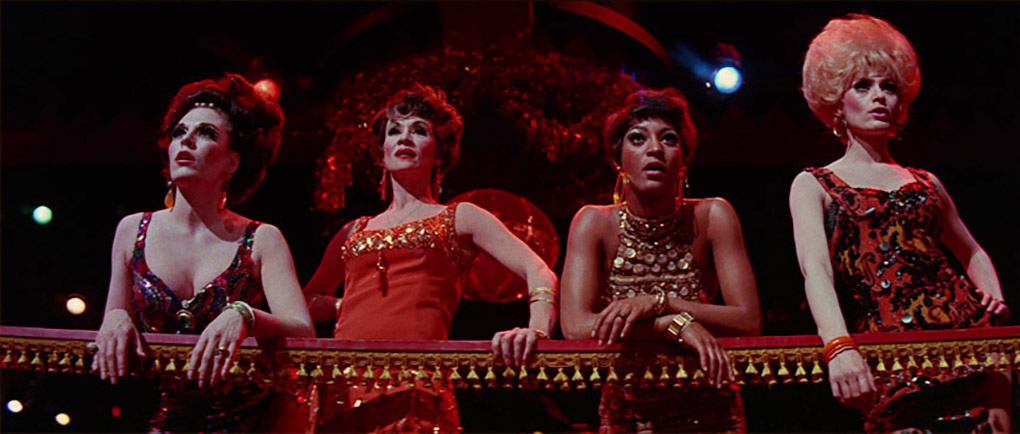
Charity all but begs people to like and love her, an act that invalidates the unconditional giving of those feelings. Forgive me, but I have known people like this and it’s very sad to see how vulnerable they are and then watch them do the one thing that would make things worse, ask or demand to be liked. But human beings are needy creatures and often ask for things that only have worth if they are given unconditionally. There’s a lot more to Charity’s character but that surface bonhomie, that trying so hard to be in love means that my focus was more on the striking dancing than Charity’s striking out on the home plate of romance. And what a spectacle those dances are. As I said, I’m here for Fosse.
If you’re of a certain vintage you will know the second line after “The minute you walked in the joint…” Sweet Charity’s roster of songs, sung or danced to, are a potent mix. Big Spender is perhaps the most famous. You have to bear in mind that being a stage choreographer and a movie choreographer require very different skills, skills that can be melded with the art of the edit. On stage you command attention very differently than in a movie. In a movie you have the close up and it’s a powerful weapon, a weapon of mass attention. Despite the gaudiness of the girls at the literal bar and their rough and ready demeanour, their movements are singular and individualistic. Fosse’s choreography is mesmeric, all jutting limbs and jammed-to-a-halt stillness. You can imagine this sequence was assembled and recut a number of times. I loved the way the reason for the song, the paying customer, is revealed to be less than manly when he claims his dance partner prize who’s a head and a half taller than he is.
Charity has a rainy run in with a famous Hollywood actor, played with effortless charm by an actor James Kirk had just marooned on Ceti Alpha V in Star Trek’s Space Seed episode two years earlier. Ricardo Montalbán is utterly charming as movie star Vittorio. In a (ahem) sweet diversion, he invites Charity to his penthouse apartment where he never appears sexually aggressive, just a lovely man who appreciates the goodness in an innocent woman. The fact he locks her in a giant wardrobe while his actual girlfriend returns is Charity’s tough luck. But he does take her to a rich man’s party in which are performed three dances (they are even identified on screen… The Rich Man’s Frug (pronounced ‘Froog’); (1) Aloof, (2) Heavyweight and (3) The Big Finish. This is the sequence that convinced me that I was watching two different films. In the best dance numbers in the movie, MacLaine is merely a spectator. Take the dancing away from the film and you may not have a film at all, so light is the confection headlined by MacLaine. But, oh boy, these dance numbers are electric. The dancers move in ways that look extraordinary, whiplashed and sharply angular, moves that probably put them in traction for a week afterwards. It seems Mr. Fosse was able to turn gravity down by a few notches watching his talent perform. They defy it with what looks like ease. This level of movement is never easy. Not keen on the caged cheetah though.
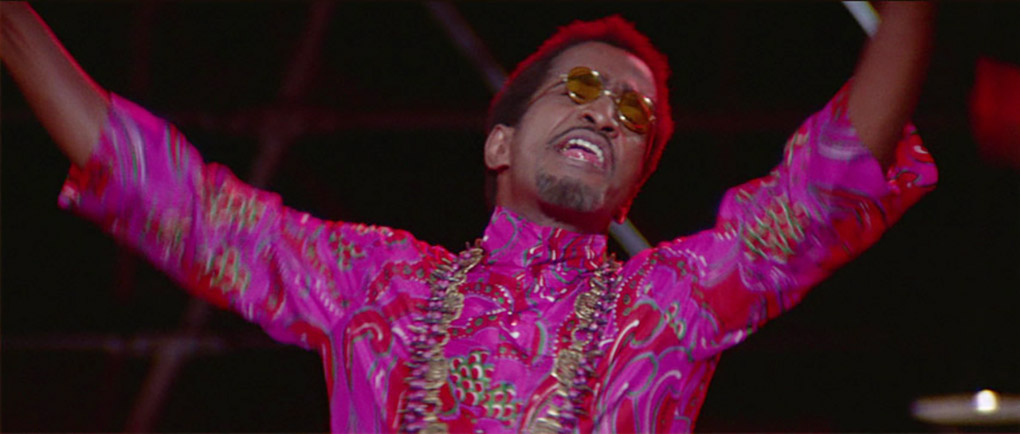
But we’re not finished yet. Charity is taken to another dance extravaganza, this time by another suitor who has hang ups galore. Why such a man would want to attend such an event had me head scratching but hey, they are there to see Sammy Davis Jnr. singing The Rhythm Of Life, a song I took in by aural osmosis as a child of the 60s. It was terribly nostalgic and charming to see the original in all its hippy and colourful glory. It also struck me watching Davis Jnr. that despite being smaller, blacker and having just the one eye, he was a physical spit of Roy Scheider whom Fosse so brilliantly directed in All That Jazz. It’s the angles on the face and the shape of the nose and conceivably the fact that Fosse choreographed them both. Is that just my imagination or is that resemblance uncanny?
Just a few more things to note; was there such a powerful fashion trend in the late 60s that dictated you had to use carefully chosen still frames in scenes and montages and added to that, songs whose vocals were essentially the repetition of ‘ba’ and ‘ba’? I know Butch Cassidy and the Sundance Kid toed that line. I’m sure there were a few others. It was lovely to see Harold and Maude’s Burt Cord at the end of the film offering balm via flowers and music and if you want to see what Fosse was capable of as a dancer himself, look no further than YouTube. Just put the words “Fosse Rall Duet” in the search box and prepare to be astonished. Despite my reservations over the simple nature of the movie’s romance I’m still surprised this hugely budgeted film lost so much money. It was budgeted at $10 or 20 million – I can’t find a definitive figure – the latter would be $140 today). It made $8 million domestically. If the stage show was so successful it may have been seen as a no-brainer to adapt it. But whereas on stage certain aspects of the story may be easily swallowed, perhaps the realism of film meant it was tougher meat that needed a bit more aggressive chewing to get it down. And make no mistake, Charity is a huge film. Despite its reputation I will say I adored the dancing and took on a much bigger appreciation of the film after viewing and listening to all the special features, so bravo Indicator and especially commentator and interviewer Lee Gambin whose passion for the film carries you along like Audrey Hepburn on a brightly coloured Vespa.
The first thing that knocks you out playing the overture is the startling power and clarity of the orchestral sound. It really does sound that either it was recorded yesterday in the best recording studio in the world or there is in fact a small but invisible orchestra in my TV room. It really is a knockout. I love how overtures and intermissions make a film stand out as a cultural event. It was never that common but if a studio wanted to say ‘This is something special!’ that’s how it was done. There are three presentations of the film, which has been remastered in 4K from an aspect ratio of 2.35:1; one with the original overture (150 mins); the second without the overture (149 mins); and the third with the alternative ending (145 mins). The film, as you might expect, looks gorgeous. There is very little grain, even fewer instances of damage of any kind and the Robert Surtees photography is crisp and bright outdoors and suitably shadowy and vibrant in colour in the dance sequences.
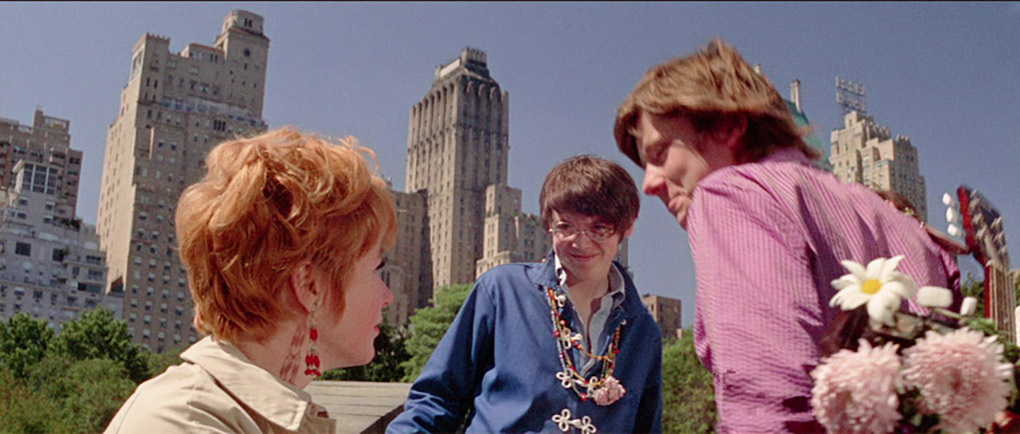
There are alternative stereo 2.0 and 5.1 surround soundtrack options (one of the few early films to be given a stereo post production). Needless to say the 5.1 remix ups the lower frequencies but the pin sharp hiss free quality of both presentations of the soundtrack is stunning.
For all three versions, there are new and improved English subtitles for the deaf and hard-of-hearing.
Audio commentary with film historians Lee Gambin, writer Alexandra Heller-Nicholas and dance scholar Cara Mitchell (2020)
Deep breath, Lee… and go! Wow. Listening to the machine-gun delivering Lee is exhilarating if also exhausting. I’m fairly sure he is operating from notes and it’s like “How much information can I get out before the next commentator takes over at the Big Spender number?” Some nice takeaways; great historical background (the studio pouring money into female led musicals); interesting that writer Paddy Chayefsky was one of Fosse’s best friends. Heller-Nicholas and Mitchell’s commentary is as informative digging deep into Fosse’s psyche and past to uncover the catalysts for his work. I won’t credit who brought up the following but I will say that each authoritative commentator earns their case of beer for this one. Here are some of the highlights:
There are quotes from Judith Crist’s review at the time (thankfully not included in the Booklet), the sort of words that can send creators into tailspins. As MacLaine was given her first break by Fosse she used her enthusiasm to have him helm Charity. Universal chief at the time, the infamous Lew Wasserman was suitably moved and said “OK, kid. Let’s get him.” Here’s one thing I didn’t know and given my passions it’s a gap well filled. Author William Peter Blatty was friends with MacLaine and went off to write a novel after staying with her. Some little thing called The Exorcist. MacLaine confirms how much Blatty borrowed from her life. His actress heroine’s name is MacNeil, MacLaine’s two home helpers were suitably added and a photo of MacLaine’s daughter, taken by Batty, the actress claims, was used on the first edition cover of the novel. It’s fame of an evil sort. Speaking of evil, I was stunned and upset to find out that Fosse was offered Burnt Offerings to direct and that he didn’t. A Fosse horror movie, the mind boggles. There is a temporal disconnect that I can’t square. It’s reported that Fosse was offered to direct the horror film while he was shooting Sweet Charity in 1968/69. The novel the horror film was based on wasn’t published until 1973… and yet it was earmarked to be shot in the summer of 1970. Uh, help?
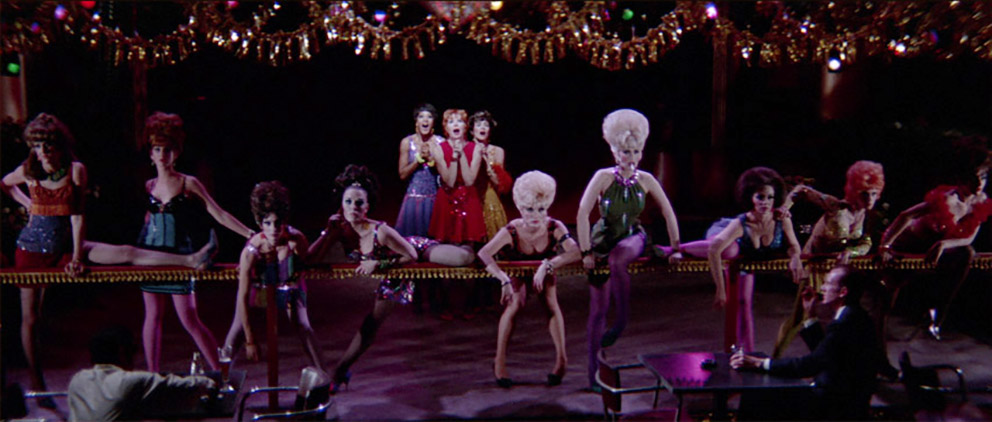
There’s lots of biographical info on the two principal dancers Paula Kelly and Chita Riviera (there’s something very satisfying that Fosse was well ahead of the game when it came to diversity). A great dancer is a great dancer. There are several notable Sondheim connections in the Fosse story. Apparently Fosse was overwhelmed by choices offered by cinema techniques and he made good use of quite a few. I would love to hear more about him losing his temper with editor Alan Heim on All That Jazz apparently throwing a bin at him saying he was a better editor before he had a baby! Now that’s a taunt. And the role of ‘Taxi dancers’ is explained which cleared things up just a small amount. Still couldn’t figure out if they were prostitutes or not.
A terrific commentary and top notch info from all three contributors.
The John Player Lecture with Shirley MacLaine (1971): archival audio recording of the celebrated actor in conversation at London’s National Film Theatre (80:34)
I have a small ‘twist’ ending to add to this feature. Just adding that up front as something to look forward to. MacLaine comes across as deeply charming and rather wickedly flirtatious. Interviewer Sheridan Morley seems smitten. She is obviously very serious about politics and takes her art seriously. Asked if she felt American, she said something striking; “If democracy fails there, it’ll fail everywhere.” MacLaine seems in 1971 to have time travelled to 2020. Perhaps it’s an ever-present threat in the States (remember who was president in 1971, Richard Nixon). “I believe in the golden rule and I’m an atheist!” is something we both share. MacLaine also talks about the reach of television against celluloid’s range and she has some interesting opinions on the key psychological differences between both mediums. It’s hugely entertaining. I had no idea she lived in Japan when she was 20 years old. Her insights about Japan may offer some pushback, particularly in these über-woke times. Her artistic side is strong and she advocates some very positive political ideas that are still potent today. Love Story, the first blockbuster of the 70s (a film I have yet to see and some friends of mine are jealous of that) comes up very often as a fantasy experience that MacLaine decries for taking people away from the truth in their own lives. Here’s the rub. As entertained as I was and supportive of her ideas, I have this to add. I asked a friend of mine who had worked directly with MacLaine a few years after this interview if he could give me any MacLaine nuggets I could add to this review, a sort of Hollywood magic dust I could sprinkle over it. He said “She was a nightmare from day one. She was without doubt the most miserable human being I have ever worked with.” What the hell happened to our 70’s ebullient Shirley?
From Stage to Screen: A Director’s Dilemma (1969): original promotional film featuring interview material with Bob Fosse and rare behind-the-scenes footage (8:59)
“Bob Fosse had never directed a motion picture. It was an awesome assignment!” says the voiceover. It is lovely to see Fosse at work but this feature plays more of a suspense piece that a puff piece. You get a real sense of how nervous Fosse was substituting his stage for a frame. Apart from the fact that he succeeded marvellously from where I sit, you still feel that weight on his shoulders. Presented in the 4:3 aspect ratio, we see Bob on stage directing and having some fun being wheeled around with his viewfinder. The final quote is telling because its truth is undeniable in almost all creative endeavours… Attributed to Oscar Wilde (who else?) the line is “The anxiety is unbearable. I hope it lasts forever.” Nice one, Bob.
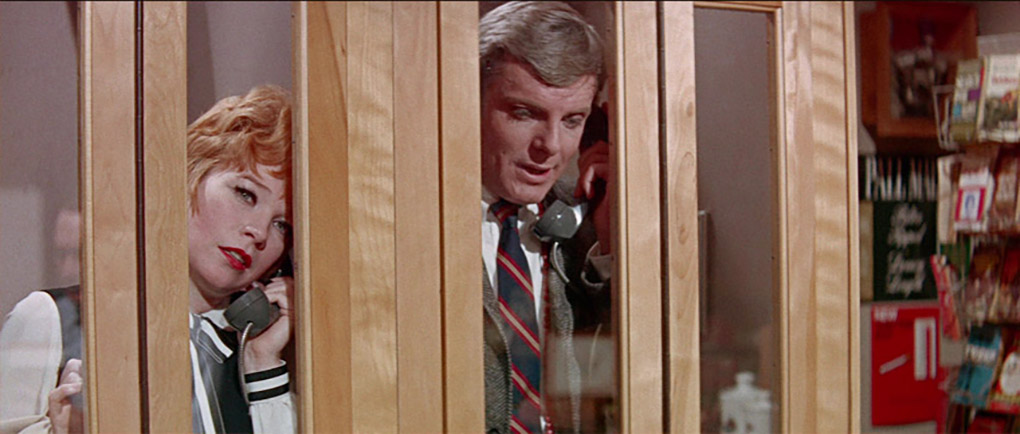
The Art of Exaggeration (1969): original promotional film profiling the work of famed costume designer Edith Head (7:27)
Oh my God, it’s Edna Mode from The Incredibles! Dahling! It’s so nice to finally see, in action too, the woman with that name, one that seemed to be working on everything during a certain era in Hollywood. She’s dressed in (no, not going there as I don't know anything about costumes but can you imagine the thought she put into what she would be wearing on camera?) Also in her second and final on camera shot, there are 7 Oscars behind her. Is this showing off? It’s show business, baby! Flaunt it! She won another in an illustrious career after 35 nominations. The footage of the wardrobe rehearsals is fascinating behind the scenes stuff.
Interview with Sonja Haney (2020): audio recording of the dance assistant in conversation with Lee Gambin (71:02)
The passionate Gambin serves as the interviewer with Haney on the other end of a telephone. The clarity is perfectly acceptable. The background information is priceless. Haney was a stand-in for MacLaine and had to juggle working on the famous Smothers Brothers Comedy Hour in between auditions. “There were no introductions, we just started dancing…” The story of the incredulous Fosse asking “How do you know my work?” as Haney just gets the moves and memorises them in one session is a humdinger. And the fact she learned all MacLaine’s dances (except the Brass Band number) in three hours… Wow. She talks about her precious relationship with Fosse’s wife Gwen Verdon (who made Charity famous on stage) and how to get a cheetah to interact with one of the dancers. You wouldn’t think a ponytail’s weight would over balance a dancer. “Fix it!” says Fosse. She explains the difference in directing styles between Fosse and John Huston with whom she worked on Annie. She ends with how dangerous it was dancing on stage in Sondheim’s Follies (dancers were regularly sliding into the orchestra pit because of the rake of the stage). Haney is still hugely enthusiastic and knowledgeable and this is a class feature. Lovely.
Now and Then: Sammy Davis Jr. (1968): archival interview featuring the actor and singer in conversation with broadcaster Bernard Braden (21:24)
This is less of a publicity piece for the film and more of a snapshot of a period. It’s after the assassination of Bobby Kennedy, a friend of Davis Jnr., a man he calls “the last bastion of hope…” As a companion piece to the MacLaine interview, the snapshot of then mirroring what we are going through today is astounding. Davis Jnr. speaks intelligently and eloquently about the importance of peace between races. He also reveals a distinctly left leaning political stance, which is refreshing in anyone who is concerned about other people, let alone a world-fêted entertainer. And he seems to be well informed (from Bobby Kennedy) about how much the three black men were paid (with money originating from Texas - $30,000) to kill Malcolm X. I can’t corroborate this information from a cursory Wikipedia page read on Malcolm X but Davis Jnr. calls it “common knowledge.” His opinion on what may happen n the UK is also frighteningly prescient. I did not expect this kind of content as a feature on Sweet Charity. It’s like finding grit in your mink glove and I like it very much.
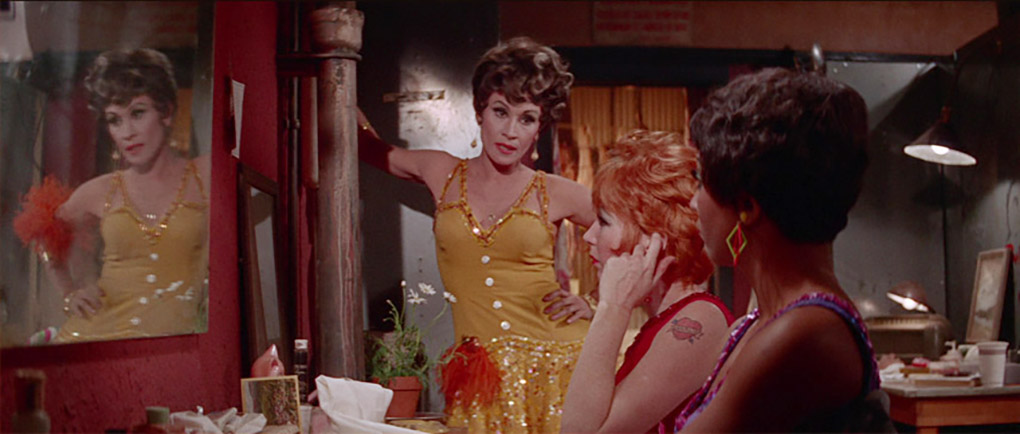
Super 8 version: original cut-down home-cinema presentation (16:56)
Ravaged by time colour wise, this extra shows extracts as oppose to accordioning the narrative. Big Spender is followed by some of the leading three dancers’ chat. Then we move straight to the Brass Band number followed by Charity’s childlike enthusiasm as she is about to get hitched. The last 8 minutes are uncut (with Fosse’s original ending). I find it interesting to imagine who might buy this Blu-ray and play this extra… “Hey, we have a full HD copy of a cleaned up movie which looks gorgeous! Let’s watch the bleached and scratched cut down with really awful sound!” For completists, of course. It’s also subtitled just FYI.
Original theatrical trailer (1:33)
Presented in the 4:3 aspect ratio, this faded film print is standard fare for its time. It’s interesting to note that there’re very few close ups or mid shots of MacLaine. She’s mentioned but the accompanying shot is a long one, which she shares with many other cast members. The message seems clear – come for the music and the dancing… I can’t argue with the perceived wisdom of the time. I’m not the greatest fan of the romantic aspect of the film. You got that, right?
Image gallery: publicity and promotional material
Production stills: These include 1 black and white portrait shot of MacLaine followed by 59 colour shots of scenes from the movie. These are followed by 4 behind the scenes shots of the tattoo being applied and 3 of Fosse with trademark cigarette.
Publicity Material: These feature 2 colour renderings of what looked like Catherine Zeta-Jones (born the year Sweet Charity came out so that’s quite a feat), Charity’s first storyboard character study (perhaps based on Gwen Verdon?), 2 colour MacLaine paintings in her classic pose and a full cast diorama. There are 4 x 2 front-of-house stills, and 30 screens of press releases, alternative poster designs and production notes.
Limited edition exclusive 80-page book with new essays by Pamela Hutchinson and Bill Rosenfield, Neil Simon on Sweet Charity, archival press coverage of the film’s release including an interview with Shirley MacLaine, extracts from the press book, Federico Fellini on Sweet Charity, an overview of contemporary critical responses, and film credits
Sweet Charity: A Pretty Girl In The Orchestra Pit by Pamela Hutchinson 2020
This is an extensive, informative and entertaining account of the birth of the whole Sweet Charity story with lots of lovely snippets new to this reviewer even after going through the extra features. There’s still a lot to be said for a well-researched article and long may they be so. All you need to know about the characters and the context of the stage musical and the movie musical is right here.
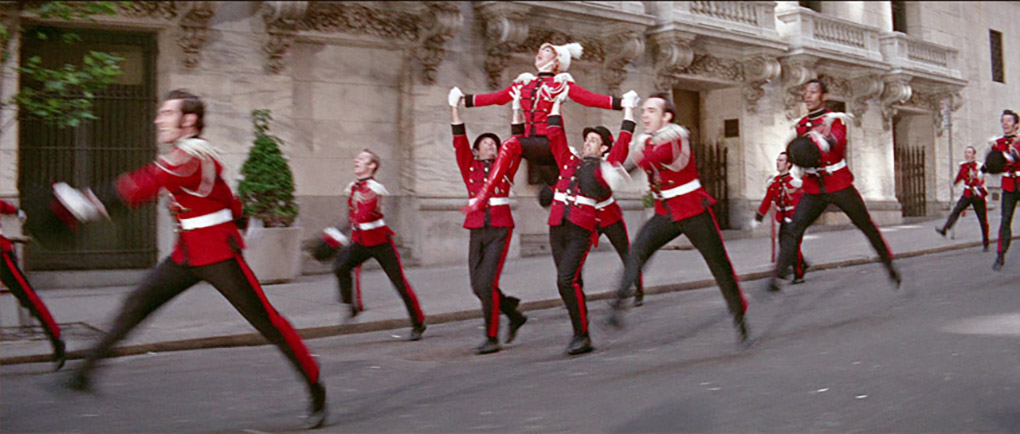
Sweet Charity: Getting Better With Age by Bill Rosenfield 2020
This is a personal account of Rosenfield’s own relationship with the film and the expectation that it would thrust stage-star Gwen Verdon into the film star spotlight. It’s odd that most of the smash musicals lost their leading ladies once translated to film. It is, of course, to Verdon’s immense credit, that she took the hit and worked hard to make Shirley MacLaine into Gwen Verdon. Rosenfield’s conclusion that the film was ahead of its time goes someway to prove that some movies age very well. From where I’m sitting, as far as the choreography is concerned, that simply seems timeless.
Neil Simon And The Creation Of Sweet Charity by Jeff Billington 2020
Mutual respect and not taking no for an answer typified Bob Fosse and playwright Neil Simon’s professional relationship. Billington’s short article is another piece of the Charity puzzle well researched and entertaining for conjuring up a relationship mostly overlooked in all the film’s marketing hoop la.
Movie Musical Praised by Robert Taylor 1968
A bittersweet three pages on the producer of Charity who had so much confidence, he was convinced Fosse had delivered the best movie musical ever made. Alas. There is such a poignancy reading people’s words and thoughts before the opening of the film – all that hope and potential…
Hollywood Gives A Big Bundle To Sweet Charity by Stanley Eichelbaum 1968
This mid-shoot set visit again captures all the hope and excitement at being part of a big production. MacLaine is interviewed and seems upbeat and excited. She touches upon the Gwen Verdon involvement and despite the usual Hollywood lathering, I don’t think the film could have been as comfortable to make if Verdon hadn’t been such a trooper and hadn’t stepped right in to coach MacLaine.
Hollywood Faces Shortage Of Professional Dancers from the Zanesville Times Recorder 1968
This two-page story uncredited describes there being a shortage of ‘great’ dancers. Once Hollywood’s bloated musicals started to lose money, there wasn’t the demand on the west coast for great dancers so they did what they had to – move east. Broadway welcomed them back with open arms.

You Can’t Tell A Kook By Her Cover: On Set With Shirley MacLaine by Gerald Nachman 1968
MacLaine comes across in this extensive interview exactly as she did in the John Player Lecture feature on this disc. Opinionated (I wonder why that word is used as a barb so many times?), political, excitable and intelligent and as Nachman observes, she’s not like other film-stars (which unnecessarily brings the what a star should or should not be back to haunt the soundstage). She mentions being friends with Bobby Kennedy and proud to being on the delegate list for the upcoming convention. He was tragically gunned down in a kitchen in L.A.’s Ambassador Hotel, one he was warned not to pass through as a short cut to the press room. Sweet Charity wrapped filming in the same month as that particular tragedy. This links directly to the Sammy Davis Jnr. feature. These were fraught times.
‘Broadway’s Smash Musical Now The Most Exciting Movie In Years!’
Extracts from the press-friendly stories gathered during production reproduced as scans from their original press materials.
Sydney Guilaroff: From Bobs To Carrot Tops
Some information on the man responsible for the distinctive wig worn by MacLaine is followed by another mimeographed reproduction of the original press story on the wig itself. A wig gets a press story. You have to love old Hollywood.
Fellini, Cabiria, Charity, And Musicals
Two and a bit pages on Federico Fellini’s research for the original film Charity was based on, Nights of Cabiria. Fellini drew on a real prostitute’s experiences for his own film.
Critical Response
Not kind overall would be the summation, and some not kind at all. I have to be honest and agree with the thrust of Jan Dawson’s take of the BFI’s Monthly Film Bulletin… She was impressed with the dancing, not so much the romance. Andrew Sarris, in his inimitably blunt fashion said, “If I put it bluntly, who needs it?” What a staggeringly hurtful statement and more so as a throwaway line in a review. Nice not to see Judith Crist’s evisceration quoted in the commentary included!
About The Presentations…
…is all about the presentations with Blu-ray credits. Bravo, team.
Bob Fosse made only five features though was prolifically active on stage and television as a singular artist. While Sweet Charity lingers in the less celebrated area of his work, it still showcases a potential he went on to fulfil in spades. If you can handle the relentless optimism of the hoyden character at its centre (and avoid the alternative ending), you’ll find some grit in this overproduced oyster. For the dance numbers alone, Sweet Charity comes highly recommended. If you’re a Shirley MacLaine fan, the girl at the centre of the love story, what’s not to love?
|